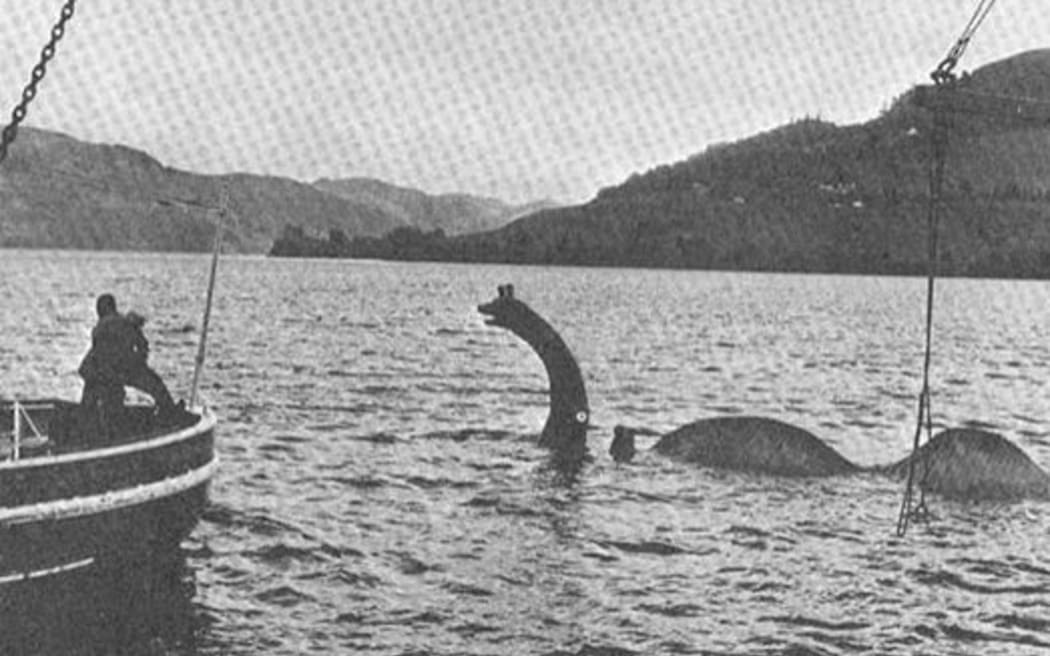
Data scientist and physicist Floe Foxton decided the eel theory was unlikely, after studying data on eel catches in Loch Ness, as well as other European lakes and freshwater bodies of water.
Eels just don't get that big, she says, to cut a long story short - after finding 129 not-very-large eels in European lakes.
However, Professor Neil Gemmell of the University of Otago believes Nessie being a giant eel remains a possibility.
While evidence of any particularly huge eels in the lake has not been proved, Gemmel says the University of Otago's study in 2018-2019 found this to be the most plausible explanation.
"First, I don't actually think there is a monster in Loch Ness, but if there was something unusual in there, then a giant eel seemed the most probable of the possibilities," Gemmell says.

"The biggest problem with this idea is that nobody's actually caught a giant eel out of Loch Ness," he says.
While there was no physical evidence of these creatures, Gemmell had heard anecdotes from people who had observed giant eels at the location.
"There's one about a professional diver who went to the bottom of Loch Ness and was inundated with giant eels and would never dive in the Loch again," he said.
Another report, published in a local newspaper in the 80s, claimed that a nearby hydroplant was clogged with eels and broke down.
"And in the report the workman talk about cutting eels out of the turbines that were as thick as a man's leg. Again, no photos, no specimen sent to museums, no physical evidence collected - just anecdote.
"But when you collect enough of these anecdotes, you start to wonder if there's something to them, and so that's where we landed - there's definitely eels there, maybe there could be a giant species or giant variant that's found in Loch Ness.

"Or you've got people who are going down the coast, catching Conga eels and throwing them in there, sticking them on a piece of string and making them move along, because that gets the local tourist trade going," he says.
"And there are operators who have put dummy monsters out, faked sightings, to bolster the local tourist trade.
While there have been sightings of eel-like monsters, others have described Nessie has having a bony spine, like a crocodile - Gemmell says this theory goes back to 1933, when a couple described a reptilian creature rushing across their car while driving home from a movie. That movie being King Kong.
"They were predisposed to the idea of seeing something weird … so that myth has persisted for quite a while," Gemmell said.
However, the original accounts, dating back to the 6th century, describe more of a serpent or snake-like creature.
"I think there is a mythology now associated with the monster," he says. "People see what they believe they see."
Gemmell says, having met some people who believed they had seen the monster, that when people witnessed something they could not explain, they rationalised it as a monster.

"They see something they can't explain, they tell their friends about it and they could be ridiculed by some. It's a very conflicting emotion."
And while Gemmell doesn't believe there really is a monster in Loch Ness, there still could be discoveries made.
"But you know, there are probably creatures out there that we haven't described yet," he says. "In a place that is as well studied as Loch Ness I'm surprised we haven't seen it."
But for now, Nessie remains a mystery - and Gemmell suggests we might prefer to keep it that way.
"That is something that is culturally shared across multiple, different peoples around the world.
"Obviously Chinese have their river dragons, there is taniwha here, there is sea serpents in northern Europe - water creatures that we all share. And often, we describe them in similar ways.
"These large bodies of water are mysterious. And actually I think as human beings in our heart of hearts, we like the idea of mystery."












